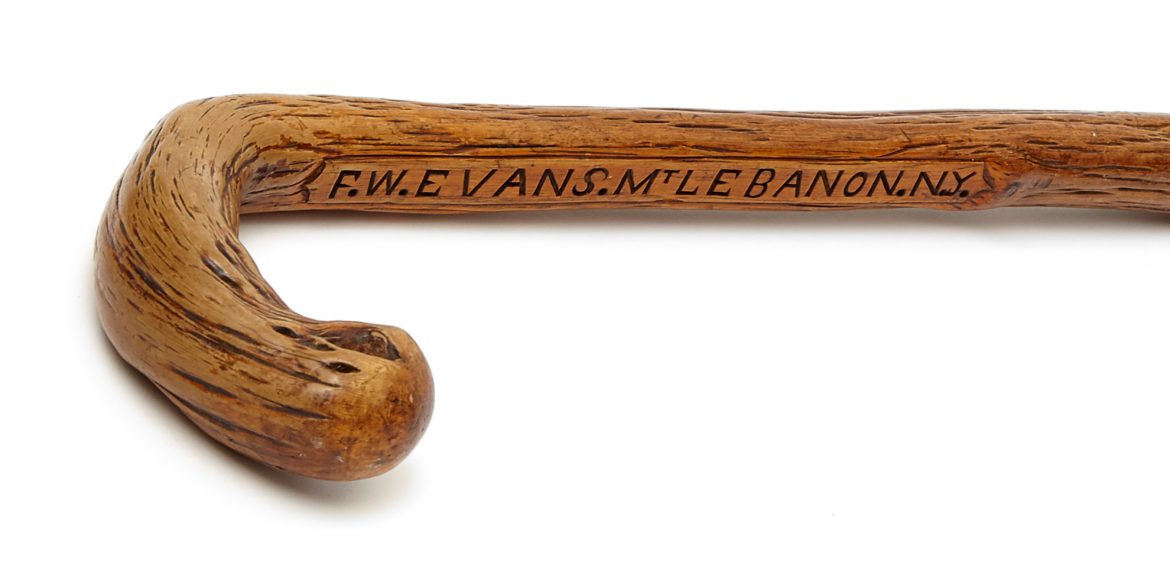
Walking Cane (detail of inscription), North Family, Mount Lebanon, New York, ca. 1885, Shaker Museum | Mount Lebanon, 209.22.1, photograph by Matthew Kroening.
Elder Frederick William Evans (1808-1893) is always described as a physically strong and active man. Although best known as the voice of progressive Shakerism, he was well known in and out of his home at the North Family at Mount Lebanon, New York, as a farmer, gardener, and orchardist. When freed from his duties as […]

Walking Cane, North Family, Mount Lebanon, New York, ca. 1885, Shaker Museum | Mount Lebanon, 209.22.1, photograph by Matthew Kroening.
Elder Frederick William Evans (1808-1893) is always described as a physically strong and active man. Although best known as the voice of progressive Shakerism, he was well known in and out of his home at the North Family at Mount Lebanon, New York, as a farmer, gardener, and orchardist. When freed from his duties as Family Elder he was often found working in gardens and orchards. There is no evidence that his strength or stamina for physical work faltered as he grew older and, in fact, in 1886, in his late 70s, Evans undertook a missionary journey to England on behalf of his community. While there, he lectured in St. George’s Hall in London. A reporter from a newspaper covering the lecture described the Elder as “a tall man, dressed like a clergyman, [who] spoke with a slight American accent.” Evans’s height, thought to be six foot five inches, and noticeable in illustrations and photographs, plays a role in the description of his walking cane.

Walking Cane (detail of inscription), North Family, Mount Lebanon, New York, ca. 1885, Shaker Museum | Mount Lebanon, 209.22.1, photograph by Matthew Kroening.
The cane, fashioned from a red oak sapling with a natural crook, bearing the carved inscription “F. W. Evans. Mt. Lebanon, N. Y.,” was acquired by Shaker Museum | Mount Lebanon in 2009 from a Willis Henry Auction, Inc. auction. The cane is thirty-three inches long and has a replaced rubber tip fit over its end. The general rule-of-thumb is that a cane should be about one-half of the height of the person who uses it. With that in mind, Elder Frederick should be using a thirty-eight inch cane – and he probably did. The cane has been cut down in length, perhaps by someone who used it after Evans’s death.

Portrait of Elder Frederick W. Evans, North Family, Mount Lebanon, New York, ca. 1885, Shaker Museum | Mount Lebanon, 1960.12212.1, photographer, Edwin S. Sterry, Albany, NY. (The cane Evans is holding is not the cane described here.)